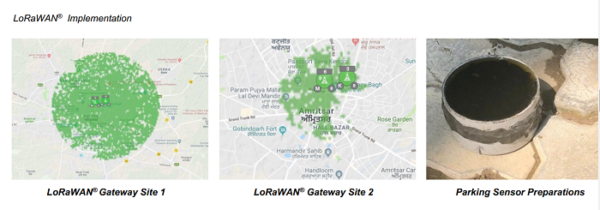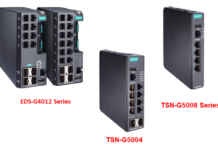
THE CHALLENGE
Alongside a rapid growth in population, India is seeing a steady rise in the income of an average middle-class household. This rapid growth, coupled with cultural shifts such as small nuclear families, dual-income households etc. has led to a rapid increase in the density of motor vehicles per household. This is putting an additional strain on the existing parking infrastructure of the already over-congested cities.
As a natural alternative, most car owners, in the absence of parking spots, choose to park on temporary spots such as roadside. Often these parking spots are marked illegal by the city authorities. It is estimated that on any working day, over 40% of the urban road area is taken up by parked cars. Several cities including Delhi, Amritsar, and Pune have taken steps towards framing a parking policy to reduce parking pressure and congestion on roads and public spaces. However, there are several problems with these conventional parking policies:
- There is an unsustainable pressure on the available land for a wasteful use.
• Minimal pricing for street parking irrespective of the demand
• Illegal encroachment of public spaces and walkways
• Restricted access for emergency services in congested areas
WHY LoRaWAN?
Even the planned smart parking management solutions have not been found to yield expected results due to choosing sub-optimal technologies. The parking sensors themselves are sometimes based on localized wireless area networks which suffer from low battery life and high maintenance costs. Instead of collecting and storing the occupancy and traffic data from these sensors and using them for advanced analytics, the data is merely displayed on an LED panel to determine vacant and occupied status. Features like parking reservation and route planning according to nearest available parking spots are not available in a centralized fashion.
Smart solutions based on LoRaWAN® can solve critical problems typical to India and also contribute to the overall Smart Cities Mission leveraging creative analytics, cloud-based data processing, and cost-effective infrastructure and solutions.
One way of addressing these issues is leveraging the smart parking sensors, longrange low-power wireless communication systems such as LoRaWAN®, and real-time analytics to provide monitoring and real-time notifications of unauthorized parking activity.
The benefit of a LoRaWAN® network is immense considering the fact that a city-wide network or an area-based network will be able to provide multiple services to the citizens to include smart parking solutions on a single network deployment. This also allows the city administrators to have a clear insight on the device and network management without worrying about managing multiple protocols and layers of data streams from a host of varied technologies.

LoRaWAN IMPLEMENTATION
As part of the Amritsar Smart City parking enforcement project, 6 LoRaWAN® enabled smart parking sensors were deployed, a public LoRaWAN® network was used for connectivity, and the data was streamed to an IoT analytics platform and mobile application, providing the city with an end-to-end smart parking solution.
Based on the site locations provided by the city, a survey was conducted of the area to determine where the LoRaWAN® network infrastructure would be deployed to provide the most reliable and stable connectivity. Items which were looked at included accessibility of the site, power availability, backhaul capabilities, elevation above sea-level and ground-level, obstructions and clear line of site. Two sites were selected for this network deployment and green field planning of the LoRaWAN® RF network deployment and propagations are illustrated in the above images.
After careful evaluation of Parking sensor vendors, a suitable OEM was chosen as preferred supplier for the devices to solve the most mission-critical aspects of parking management and provide accurate, real- time vehicle detection. The sensor uses very accurate magnetic sensing system and sophisticated vehicle detection algorithms that accurately detect the presence or absence of a car in a given parking space even in dense urban environments which are typically prone to magnetic interference.
One of the most important criteria for device selection was ability to be installed in a deploy and forget scenario. This means the device should have an ultra-low power consumption and several years of battery life. It is ensured by the LoRaWAN® MAC protocol and the device software algorithms that the device can deliver up to 10 years of battery life, and is stable over temperature fluctuations, even in harsh environments.
The Illegal parking spots allocated by the Amritsar Smart City were located on the on main streets which ran in parallel to the traffic flow.
Prior to installation each sensor’s unique serial number was recorded and mapped to the location of installation. This is especially useful for individual parking space monitoring as well as trouble-shooting sensor performance and communication.
The devices were then sealed and covered entirely with epoxy inside secure PVC casing to protect them against moisture and dust ingress. 4.5-inch diameter holes were drilled in the ground and the debris was removed. Next, a layer of sand with cement was used to level the bed to ensure a flat surface for devices. The sensors covered in epoxy and PVC casing was then inserted into the hole such that the top of the sensor sat 1/4 to 3/8 of an inch below the surface of the asphalt.
After installation, a BLE device was used to activate the LoRaWAN® module incorporated in the smart sensor, which in turn registered the device(s) successfully to the network.

LoRaWAN BENEFITS
After several months of development for this specific use case, we were able to create an intelligent interface that shows, in real-time, various parameters such as:
- Occupied and Vacant Status of individual parking lots
- Illegal car parked status
- Overall Average Occupancy
- Daily and Hourly parking activity
- Historical data – both monthly and weekly
- Popular parking times
- Individual device monitoring
- Individual device status history
In retrospect, through the course of this project, the integrated application server / platform has been able to provide the city with information which had never been available prior to this deployment. The city was now able to see, in a transparent fashion, the non-generated revenue which could have been collected from issued tickets (“Challans”) for cars which parked illegally in the no parking zones.
As an additional benefit, this also helped curb the problem of corruption and lawlessness in the city. Leveraging cloud computing, artificial intelligence, complicated algorithms, and big data processing, we were able to demonstrate several data sets which helped the city improve the parking management as well as enforcement.
Leveraging LoRaWAN®, the city was able to deploy a low-cost solution which reduced the need for man-power, reduced traffic congestion, and generated new realized revenue with a +30% return of investment.
CONCLUSIONS
With a rapid rise in number of motorized vehicles in Indian Urban settlements, one can easily see an impending parking space crunch and insatiable parking demands. While the government bodies are becoming more and more aware of this issue, little has been done to incorporate smart solutions that can actually make a difference. With the ongoing efforts of this project, cities are now realizing that smarter parking solutions can be successfully implemented when leveraging cutting edge technology and in – house expertise from vertical experts. Smart parking management solutions is able to identify and penalize Illegal car parking, introduce variable pricing, ensure unhindered lanes for passage of emergency vehicles as well as enable overall street improvement for all road users. Through this proof of concept, SenRa has enabled the city authorities to realize revenues never seen before. In addition, it has given a highly competent tool to the enforcement agencies that, if used properly, can completely curb the menace of illegal car parking and reduce traffic congestion in future Smart Cities.



















